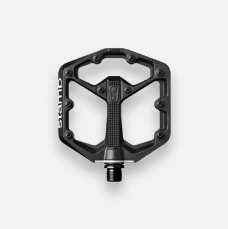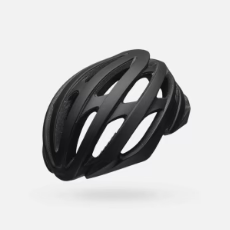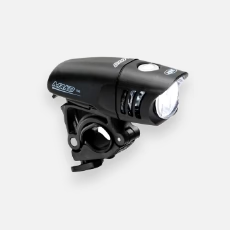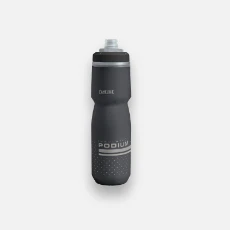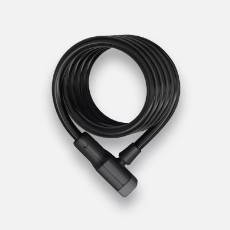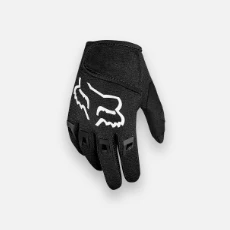GIANT TRANCE ADVANCED PRO 29 1 MTB BIKE 2023 GLOSS CORDOVAN/MATT CORDOVAN
Product Details - Giant Trance Advanced Pro 29 1 Mtb Bike 2023 Gloss Cordovan/matt Cordovan
Product Details - Giant Trance Advanced Pro 29 1 Mtb Bike 2023 Gloss Cordovan/matt Cordovan
Shred hard and shred fast with this lively 29er.
It’s built on an all-new full-composite frame with adjustable geometry, giving you smooth control to blitz technical trails at speed.
Features Giant Trance Advanced Pro 29 1 MTB Bike 2023
- Adjustable frame geometry: New flip chip feature lets you change the head tube and seat tube angles, as well as the bottom bracket height, to fine-tune handling for varying trail conditions and individual riding style.
- 29er confidence and control: Larger 29-inch diameter wheels optimized to roll over rough terrain with balance and stability, giving you the momentum to tackle technical climbs and the confidence to fly on fast, rugged singletrack descents.
- Progressive trail design: Lightweight Advanced-grade composite frameset features a longer reach and steeper seat tube for aggressive trail riding and improved climbing capabilities. Updated Maestro rear suspension features 120mm of rear wheel travel paired with a 130mm fork up front.
Specification
- Frame: Advanced-Grade Composite front and rear triangles, Maestro Suspension with flip chip, 120mm travel, 12x148mm thru-axle, wheelsize 29" only F&R
- Rear Shock: FOX Factory Live Valve Trunnion 185x50, custom tuned for Giant
- Fork: Fox 34 Factory Live Valve, 44mm offset,130mm travel, Boost 15x110 Kabolt, Tapered
- Gear Shifters: SRAM GX Eagle, 1x12
- Chainset: SRAM GX, 30T, 55mm chainline
- Rear Cassette: SRAM GX XG 1275 10x52
- Chain: SRAM GX Eagle
- Front Derailleur: NA
- Rear Derailleur: SRAM GX Eagle
- Bottom Bracket: Shimano, press fit
- Pedals: Not supplied
- Rims: New TRX 2 29" hookless carbon wheelsystem and 30mm rim inner width provides best-in-class strength, durability, stiffness, efficiency and lightweight tuned for the most challenging Trail/Enduro riding scenario
- Front Hub: Giant TRX 2 Carbon 29 WheelSystem
- Rear Hub: Giant MTB alloy, 3-pawl driver, 6-bolt
- Front Tyre: Maxxis Minion DHF 29x2.5 WT, 60 TPI, 3CMaxTerra , EXO, TR
- Rear Tyre: Maxxis Aggressor 29x2.5WT, 60 TPI, Dual, EXO, TR
- Brakes: Shimano XT M8120, Hydraulic Disc, 4 piston, [F] 180mm [R]180mm
- Handlebars: Giant Contact SLR TR35, 780x35mm, 20mm rise, Carbon
- Handlebar Grips: Giant Tactal Pro Single S:120mm, M:120mm, L:130mm, XL:130mm
- Stem: Giant Contact SL 35 S:40mm, M:40mm, L:50mm, XL:50mm
- Saddle: Giant Romero SL
- Seatpost: TranzX travel-adjustable dropper, remote S: 120-150mm travel / 30.9 x 459mm M: 140-170mm travel / 30.9 x 499mm L: 170-200mm travel / 30.9 x 525mm XL: 170-200mm travel / 30.9 x 525mm
- Extras: Factory tubeless set up including sealant, max tyre size 2.6", max chainring size 34T
- Weight: The most accurate way to determine any bike’s weight is to have your local dealer weigh it for you. Many brands strive to list the lowest possible weight, but in reality weight can vary based on size, finish, hardware and accessories. All our bikes are designed for best-in-class weight and ride quality.
We reserve the right to make changes to the product information contained on this site at any time without notice, including with respect to equipment, specifications, models, colours, materials and pricing. Due to supply chain issues, compatible parts may be substituted at any time without notice.
Bike and frame weights are based on pre-production painted frames at time of publication. Weights may vary in final production.
Size Guide
Size Guide

How we Build & Pack Your Bike
How we Build & Pack Your Bike
Aftercare
Aftercare
At All Terrain Cycles, we want you to ride with confidence every time. To ensure your bike or e-bike stays in peak condition, here are some essential safety and maintenance tips.
Bicycle Safety
Always wear a helmet – Safeguard against head injuries by using a properly fitted, safety-certified helmet.
Perform pre-ride checks – Before each ride, verify that brakes, tyres, and gears are in good working order.
Stay visible – Utilise lights and reflective gear when cycling in low-light conditions.
Follow road rules – Ride responsibly and remain aware of your surroundings.
Aftercare for Your New Bike Initial Check-Up (First 50-100 miles)
Gear Adjustment – New cables may stretch slightly; have a qualified mechanic check and adjust them.
Brake & Wheel Check – Inspect brakes for wear and ensure wheels are aligned properly.
Lubrication – Apply chain oil and check bolt tightness to maintain smooth performance.
Tyre Pressure – Regularly monitor to prevent flats and enhance efficiency.
Routine Maintenance (Every Few Weeks)
Chain Care – Clean and lubricate your chain to minimise wear and prolong its life.
Brake Safety – Check brake pads and responsiveness before each ride.
Tyre Inspection – Look for punctures and ensure correct air pressure.
Handlebar & Stem Alignment – Confirm they are tight and secure to prevent instability.
Frame Safety Check – Look for any signs of damage or cracks.
Professional Check-Ups
Have your bike serviced at least once a year, or more frequently if you ride often.
Aftercare for Your New Electric Bicycle (e-Bike) Initial Check-Up (First 50-100 miles)
Battery Care – Fully charge your battery (if required) before the first ride and store it in a dry, moderate-temperature environment.
Avoid Overcharging – Unplug the charger once fully charged to extend battery life.
Routine e-Bike Maintenance (Every Few Weeks)
Motor Inspection – Listen for unusual noises and ensure smooth operation.
Battery & Connection Checks – Inspect cables and connectors for dirt, moisture, or damage.
Seasonal e-Bike Maintenance
Check Electrical Components – Ensure wires and connections are clean and secure.
Professional Servicing – Have your e-bike inspected at least once a year or every 500-1000 miles for optimal performance.
By following these aftercare guidelines, you’ll help ensure that your bicycle runs smoothly, lasts longer, and remains a joy to ride. Stay safe and enjoy the ride!
If you have any problems or concerns: Contact All Terrain Customer Services on 01274 588488 or email sales@allterraincycles.co.uk
You Might Be Interested In
- SKU: 2311046104
- EPOS Code:



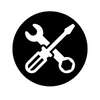

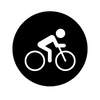
Product Description
Product Description
Shred hard and shred fast with this lively 29er.
It’s built on an all-new full-composite frame with adjustable geometry, giving you smooth control to blitz technical trails at speed.
Features Giant Trance Advanced Pro 29 1 MTB Bike 2023
- Adjustable frame geometry: New flip chip feature lets you change the head tube and seat tube angles, as well as the bottom bracket height, to fine-tune handling for varying trail conditions and individual riding style.
- 29er confidence and control: Larger 29-inch diameter wheels optimized to roll over rough terrain with balance and stability, giving you the momentum to tackle technical climbs and the confidence to fly on fast, rugged singletrack descents.
- Progressive trail design: Lightweight Advanced-grade composite frameset features a longer reach and steeper seat tube for aggressive trail riding and improved climbing capabilities. Updated Maestro rear suspension features 120mm of rear wheel travel paired with a 130mm fork up front.
Specification
- Frame: Advanced-Grade Composite front and rear triangles, Maestro Suspension with flip chip, 120mm travel, 12x148mm thru-axle, wheelsize 29" only F&R
- Rear Shock: FOX Factory Live Valve Trunnion 185x50, custom tuned for Giant
- Fork: Fox 34 Factory Live Valve, 44mm offset,130mm travel, Boost 15x110 Kabolt, Tapered
- Gear Shifters: SRAM GX Eagle, 1x12
- Chainset: SRAM GX, 30T, 55mm chainline
- Rear Cassette: SRAM GX XG 1275 10x52
- Chain: SRAM GX Eagle
- Front Derailleur: NA
- Rear Derailleur: SRAM GX Eagle
- Bottom Bracket: Shimano, press fit
- Pedals: Not supplied
- Rims: New TRX 2 29" hookless carbon wheelsystem and 30mm rim inner width provides best-in-class strength, durability, stiffness, efficiency and lightweight tuned for the most challenging Trail/Enduro riding scenario
- Front Hub: Giant TRX 2 Carbon 29 WheelSystem
- Rear Hub: Giant MTB alloy, 3-pawl driver, 6-bolt
- Front Tyre: Maxxis Minion DHF 29x2.5 WT, 60 TPI, 3CMaxTerra , EXO, TR
- Rear Tyre: Maxxis Aggressor 29x2.5WT, 60 TPI, Dual, EXO, TR
- Brakes: Shimano XT M8120, Hydraulic Disc, 4 piston, [F] 180mm [R]180mm
- Handlebars: Giant Contact SLR TR35, 780x35mm, 20mm rise, Carbon
- Handlebar Grips: Giant Tactal Pro Single S:120mm, M:120mm, L:130mm, XL:130mm
- Stem: Giant Contact SL 35 S:40mm, M:40mm, L:50mm, XL:50mm
- Saddle: Giant Romero SL
- Seatpost: TranzX travel-adjustable dropper, remote S: 120-150mm travel / 30.9 x 459mm M: 140-170mm travel / 30.9 x 499mm L: 170-200mm travel / 30.9 x 525mm XL: 170-200mm travel / 30.9 x 525mm
- Extras: Factory tubeless set up including sealant, max tyre size 2.6", max chainring size 34T
- Weight: The most accurate way to determine any bike’s weight is to have your local dealer weigh it for you. Many brands strive to list the lowest possible weight, but in reality weight can vary based on size, finish, hardware and accessories. All our bikes are designed for best-in-class weight and ride quality.
We reserve the right to make changes to the product information contained on this site at any time without notice, including with respect to equipment, specifications, models, colours, materials and pricing. Due to supply chain issues, compatible parts may be substituted at any time without notice.
Bike and frame weights are based on pre-production painted frames at time of publication. Weights may vary in final production.
Size Guide
Size Guide

How to Build Your Bike
How to Build Your Bike
Aftercare
Aftercare
At All Terrain Cycles, we want you to ride with confidence every time. To ensure your bike or e-bike stays in peak condition, here are some essential safety and maintenance tips.
Bicycle Safety
Always wear a helmet – Safeguard against head injuries by using a properly fitted, safety-certified helmet.
Perform pre-ride checks – Before each ride, verify that brakes, tyres, and gears are in good working order.
Stay visible – Utilise lights and reflective gear when cycling in low-light conditions.
Follow road rules – Ride responsibly and remain aware of your surroundings.
Aftercare for Your New Bike Initial Check-Up (First 50-100 miles)
Gear Adjustment – New cables may stretch slightly; have a qualified mechanic check and adjust them.
Brake & Wheel Check – Inspect brakes for wear and ensure wheels are aligned properly.
Lubrication – Apply chain oil and check bolt tightness to maintain smooth performance.
Tyre Pressure – Regularly monitor to prevent flats and enhance efficiency.
Routine Maintenance (Every Few Weeks)
Chain Care – Clean and lubricate your chain to minimise wear and prolong its life.
Brake Safety – Check brake pads and responsiveness before each ride.
Tyre Inspection – Look for punctures and ensure correct air pressure.
Handlebar & Stem Alignment – Confirm they are tight and secure to prevent instability.
Frame Safety Check – Look for any signs of damage or cracks.
Professional Check-Ups
Have your bike serviced at least once a year, or more frequently if you ride often.
Aftercare for Your New Electric Bicycle (e-Bike) Initial Check-Up (First 50-100 miles)
Battery Care – Fully charge your battery (if required) before the first ride and store it in a dry, moderate-temperature environment.
Avoid Overcharging – Unplug the charger once fully charged to extend battery life.
Routine e-Bike Maintenance (Every Few Weeks)
Motor Inspection – Listen for unusual noises and ensure smooth operation.
Battery & Connection Checks – Inspect cables and connectors for dirt, moisture, or damage.
Seasonal e-Bike Maintenance
Check Electrical Components – Ensure wires and connections are clean and secure.
Professional Servicing – Have your e-bike inspected at least once a year or every 500-1000 miles for optimal performance.
By following these aftercare guidelines, you’ll help ensure that your bicycle runs smoothly, lasts longer, and remains a joy to ride. Stay safe and enjoy the ride!
If you have any problems or concerns: Contact All Terrain Customer Services on 01274 588488 or email sales@allterraincycles.co.uk
You Might Be Interested In






























